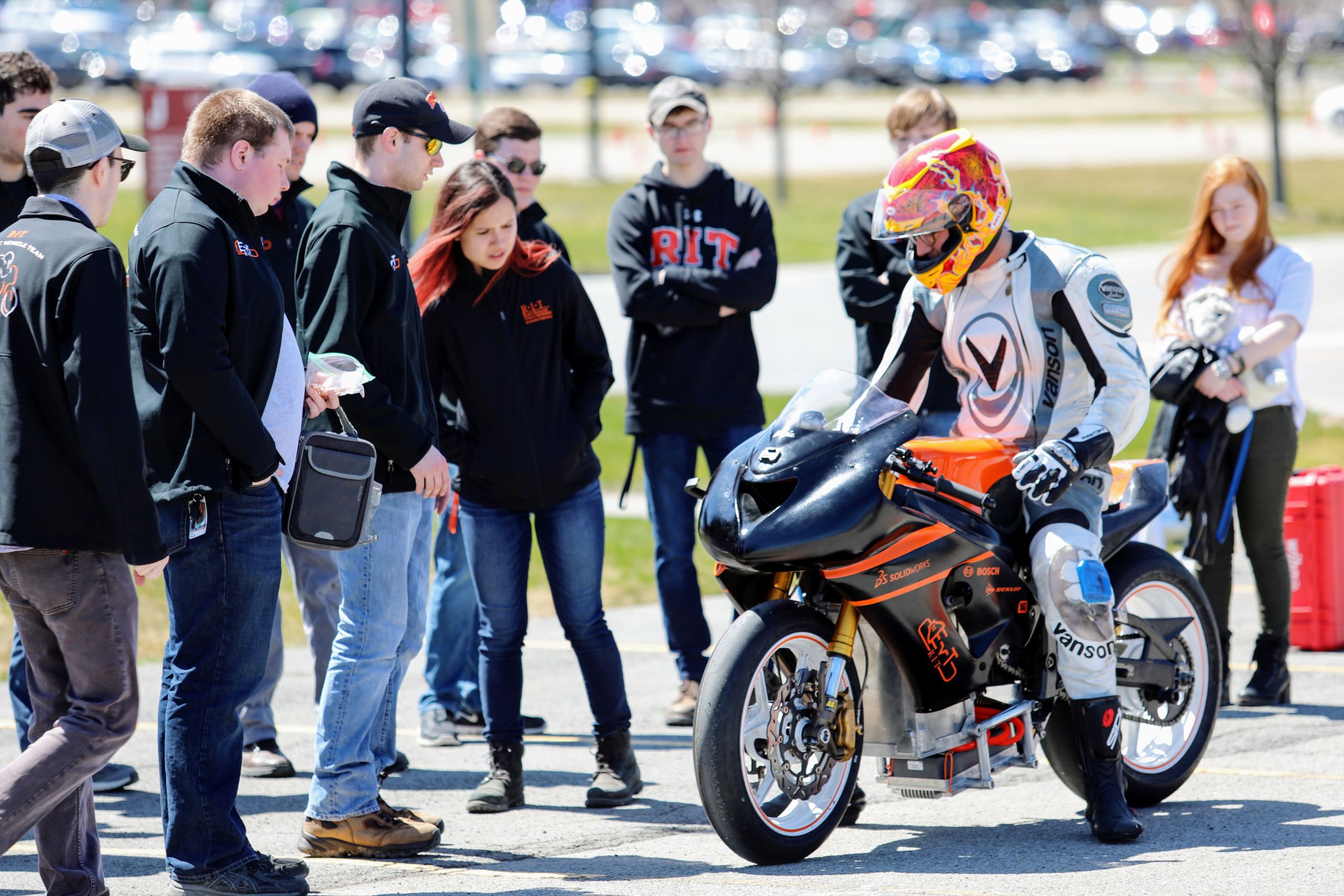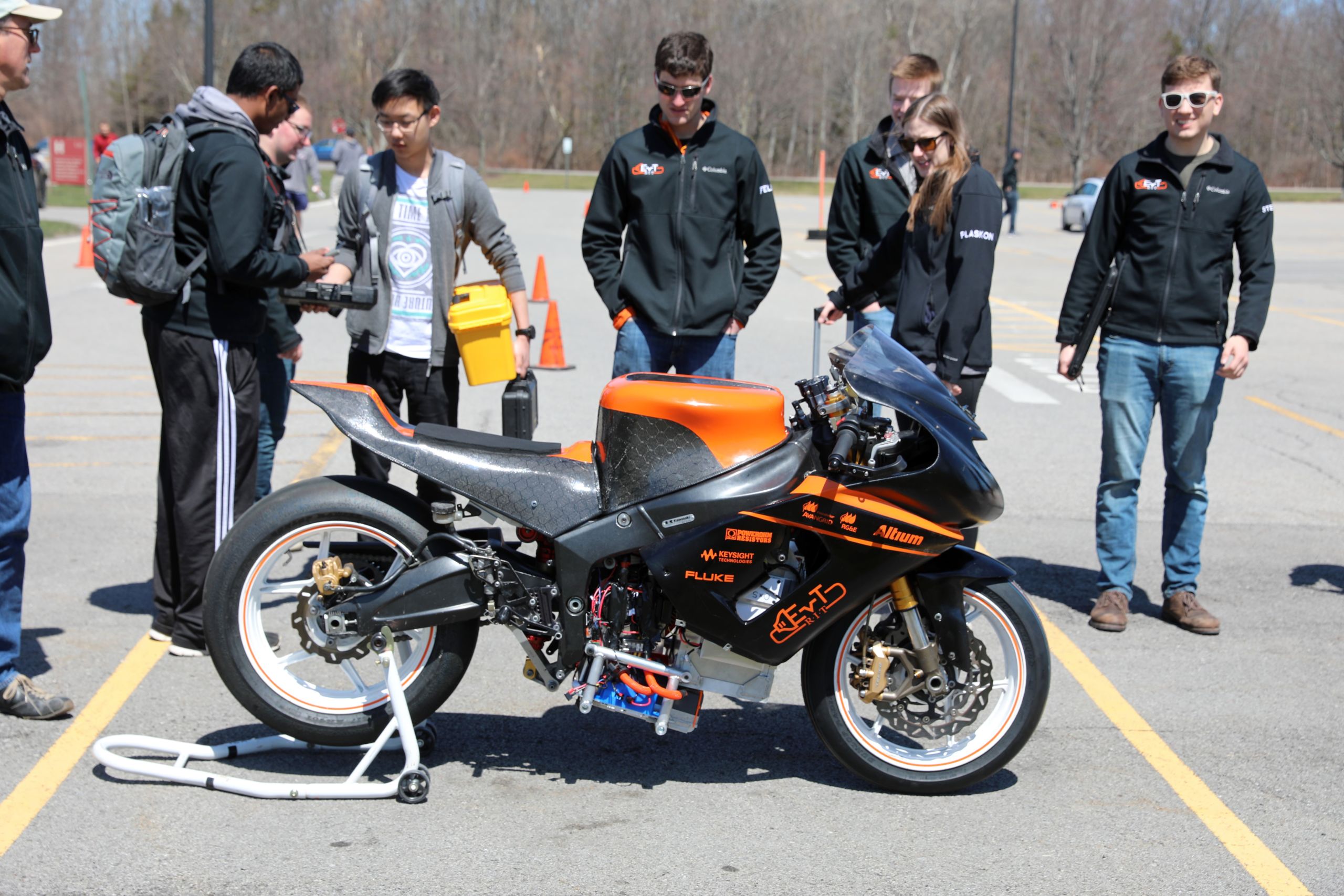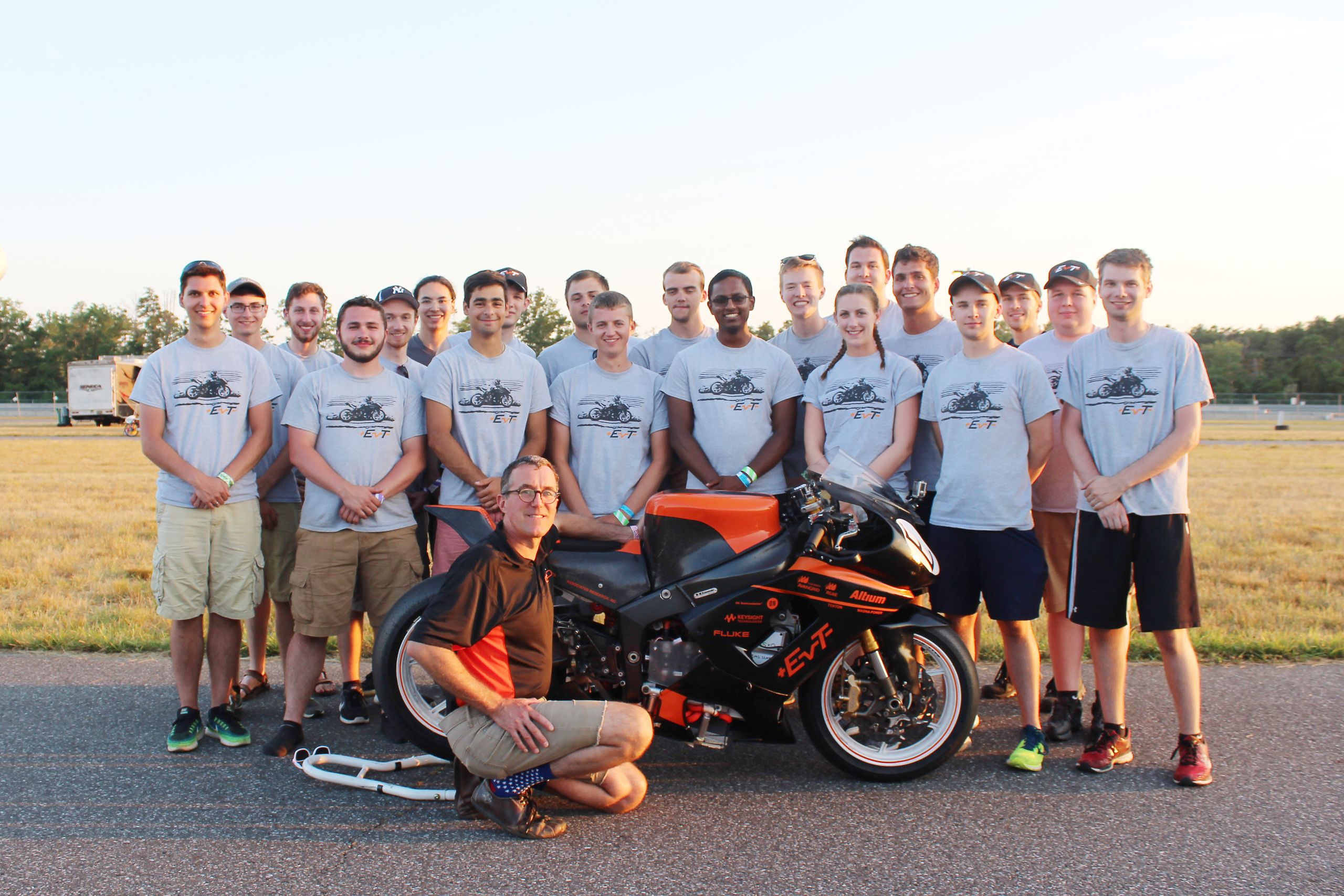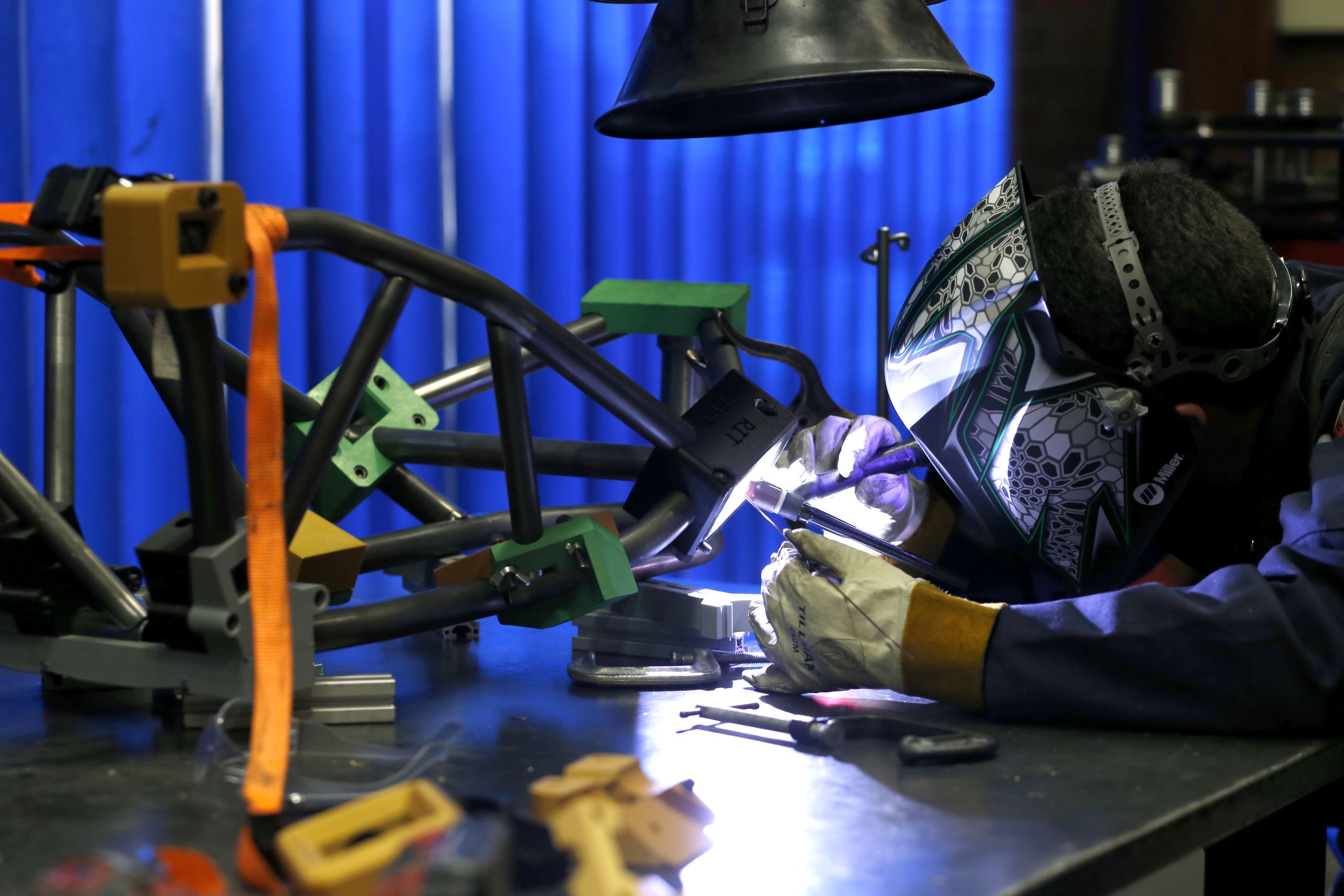RIT’s experiential learning tops out at 118 mph.

The flag falls. An orange motorbike leaps off the starting line, flying into first place — not with a roar, but with a hum. This is what an electric superbike sounds like, reimagined and rebuilt by students at Rochester Institute of Technology, where creativity and innovation collide.
It might ride with a whisper, but this fully electric superbike is 450 pounds of power and speed. RIT’s Electric Vehicle Team (EVT) is the driving force behind the bike that debuted at the 2015 eMotoRacing Varsity Challenge. EVT was one of 10 university teams invited to the national event and the only one to complete the competition races.
“This was the greatest experience,” said Jeff Botticello, a mechanical engineering student and the team’s project manager. “We were the only university in a competition with other professional bike teams. It was good to see how our bike would compare to those. But on the first lap of each race, our times were about the same as everyone else’s.”
EVT is one of the best — and certainly fastest — examples of the purposeful blending of technology, the arts, and design that RIT is known for. The interdisciplinary team is comprised of students from a wide range of majors, including engineering, industrial design, computer science, business, and more. Students gain real-world experience while learning from each other, and taking innovative risks to produce a competitive, successful product. The superbike is not only fast and sustainable, but a beautiful piece of machinery.
“RIT students were going wheel-to-wheel with the professionals at 118 mph,” said George Slack, lecturer in RIT’s electrical engineering department and faculty advisor to the team, who added that RIT’s was not only one of the fastest bikes, but it was the best looking.
Three teams, one goal.
The work on the superbike is broken into three teams, working in tandem to ensure the machine operates at peak capacity while retaining a beautiful design aesthetic. One team designs and maintains the bike’s electrical system, while another team focuses on the interface between the rider and bike. The third team is responsible for manufacturing new parts and finding creative ways to fit cutting-edge battery technology into what used to be a fuel tank.
RIT's signature collaborative approach means the students on all three teams are constantly in conversation with each other. This ensures that new ideas are being generated and gives students an accurate simulation of life inside today’s fast-paced, companies.

Each year, the RIT Electric Vehicle Team unveils a new bike that includes improved design as well as electronic and mechanical systems. The team practices in RIT parking lots prior to going to national competitions.
Each year, the RIT Electric Vehicle Team unveils a new bike that includes improved design as well as electronic and mechanical systems. The team practices in RIT parking lots prior to going to national competitions.
There’s room for everyone on this team.

New members of the EVT cut their teeth by assisting on a range of superbike-related projects, from analysis and design to manufacturing and testing. Once they've gotten their footing, they begin working directly on the bike in whatever capacity interests them most. From there, they may go on to become team leaders, overseeing other students and gaining both leadership experience and project management skills. Although their work is done in collaboration with faculty advisors and outside experts, the EVT is truly a student-run endeavor that has risen to national prominence.
The team races in the American Historic Racing Motorcycle Association (AHRMA) eMotoRacing all-electric race series, representing RIT and competing against other collegiate teams. EVT is evidence of RIT’s dedication to developing sustainable, environmentally conscious solutions that drive organizations toward environmental sustainability. The superbike is an opportunity for students to propose and explore new ideas that will propel the automotive industry toward electric vehicles, lessening our reliance on natural resources and ultimately making a positive impact on the environment and the world.
Win or lose, almost every student in EVT will ride that bike to their next job. “EVT was an awesome story to tell since electric motorcycle racing really sticks out, and the projects the team takes on are the same design challenges companies are currently facing with battery systems” said recent graduate and former EVT team manager, Alexander Young.
EVT embodies RIT’s imaginative spirit – where student teams take things apart, analyze, adjust, and rebuild – which leads to innovative design solutions that are better, stronger, faster, and more sustainable. This is the kind of experiential learning that puts all RIT students on the fast track to successful, meaningful careers.

A member of the RIT Electric Vehicle Team welds part of the motorcycle frame at a machine shop on the campus of Rochester Institute of Technology. RIT is one of the few teams that builds its own parts and equipment—brakes to chassis—right on campus.
A member of the RIT Electric Vehicle Team welds part of the motorcycle frame at a machine shop on the campus of Rochester Institute of Technology. RIT is one of the few teams that builds its own parts and equipment—brakes to chassis—right on campus.



